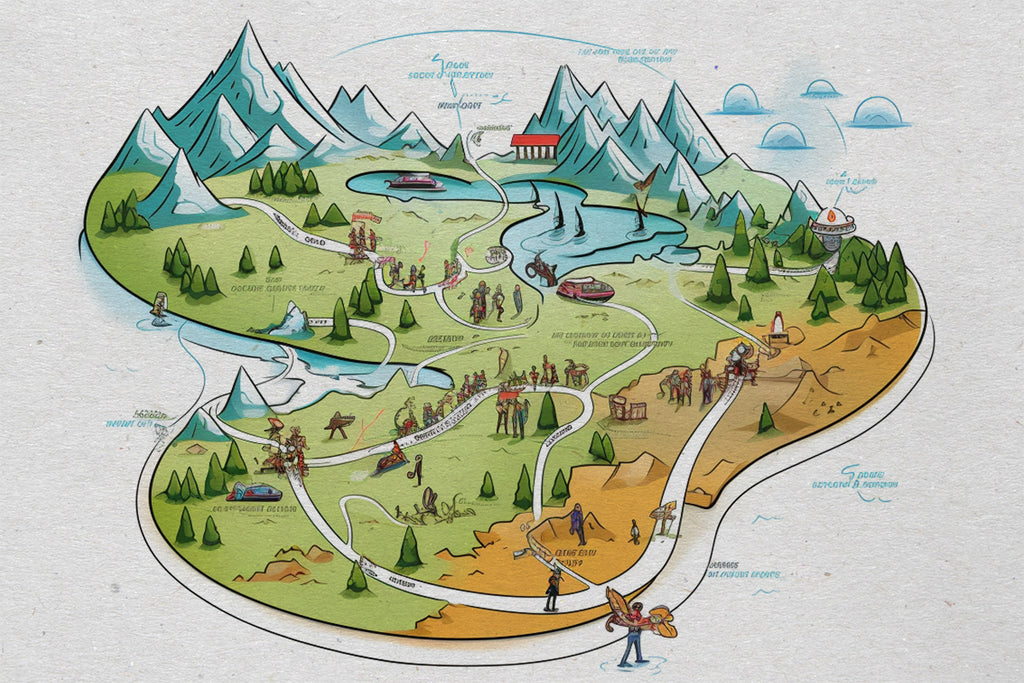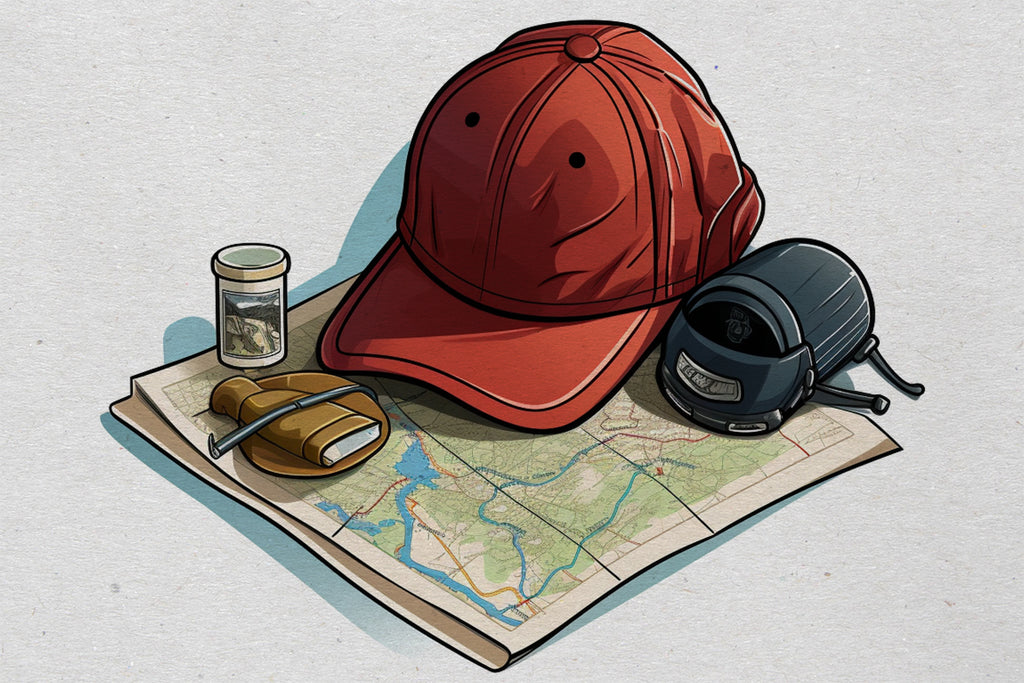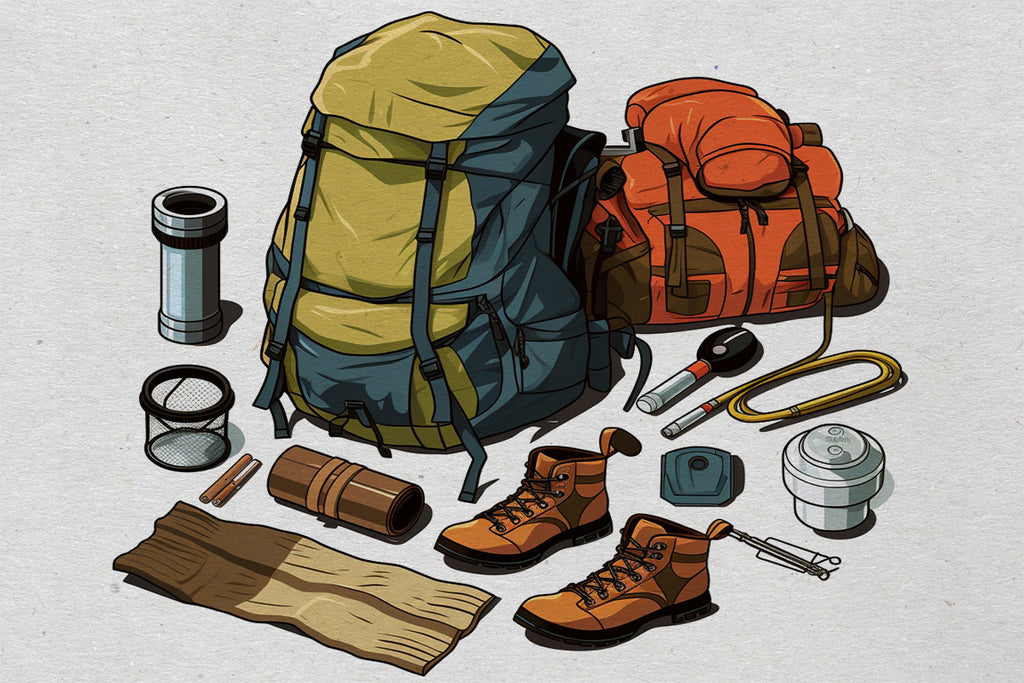
We often don’t realise how amazingly undaunted and resilient children are – just like how even the tiniest of flowers in nature can have the toughest roots. Many parents seeing their kids on an outdoors trip for the first time share this takeaway, seeing their little ones adjusting to being stripped of the known comforts of city life, often even leading the pack and being the bundle of energy driving the whole team.
While children mostly thrive facing the unknowns of their first wilderness trip, it’s still extremely important for parents to ensure that they take all (and more) precautions when planning the trip – from choosing the right route and finding the right guide, to preparing well before the trip, packing the right stuff and (while on the trip) ensuring safety at all times.
If it’s going to be your child’s first trek, consider the following factors.
Choose the right route

-
Choose a route graded as Easy / Beginners’ (meaning slopes are gentler and daily distances shorter), ideally of 3-4 days (it requires less stamina to complete).
-
A route with maximum altitude less than 12,000 ft, so you are limiting risk exposure in case your child has a physiological challenge adjusting to hypoxia.
-
Check if horses / mules ply the route and whether the operator will hire mules instead of porters. If so, evacuation in case of an emergency is much easier.
-
The route shouldn’t run through major landslide zones or risky river crossings.
-
Avoid routes known to be teeming with wildlife.
Choose the right operator/guide

- An impeccable safety record is a must. It’s a huge plus if the operator has prior experience in specialised trips for kids.
- The operator must plan for keeping kids engaged, especially in the evenings. Camp games, small competitions (e.g. storytelling, music). Some operators plan a range of learning activities as well – like basic lessons in geology, geography, photography, stargazing, bird watching, map reading and even survival skills.
- Ask for a doctor (preferably a paediatrician) on the trip, if possible. At the very least, the guide or team leader should have paramedic training – i.e. be able to perform CPR, administer injectables if necessary.
- Ask for the experience & certifications of the trek leader or guide. Most operators tend to assign their staff to trips at the last minute; however, the best operators ensure their best support for trips designed for kids’, and should be able to commit earlier.
- Check if the operator is a local, or at least employs a lot of locals in the team. Besides obviously boosting local income, employment of locals is almost an insurance for excellent ground support in case of an emergency.
Assess your child’s health status

- Consult a physician and seek professional advice on your child’s health. A general health assessment and an allergy test are highly recommended.
- Make sure you know if your child has any allergies and communicate to the organisers. The last thing you want on a wilderness trail is a health emergency triggered by nuts in trail mix.
- Congenital medical conditions: while some conditions like asthma may already be known to the parent, some conditions may only be known on exposure.
- Lung function: Many operators advise against including children under 12 on high altitude routes like Everest Base Camp; this is because lungs in children fully develop around the age of 13/14. If your child engages regularly in a physically demanding activity (football/soccer, hockey, swimming), this is far less likely to become an issue. Some operators even set a height restriction for kids to be allowed for certain routes, but there’s little scientific basis for that (unless you take height as a proxy for age)
Ensure the right gear

- Planning the gear ahead is key, because not all gear is always easily available for kids’ sizes. Neither do you want to scramble at the last minute to find the right gear, nor do you want to end up with a poor compromise. For example, it is often hard to find the right kids’ sizes for feather jackets – and if that’s a requirement for the route / season, you could be compromising the first line of defence your child will have against the elements.
- Ensure that your child has broken into any new trekking shoes. Blisters or shoe-bites can be a major nuisance while walking 5-10 km in the day, and is easily avoided by wearing the shoes for a couple of weeks before the trip.
- Research brands that specialise in kids’ outdoor gear, and make purchases well ahead in time.
Take all precautions on the trip
All planning can come to nothing if execution on the ground suffers.- For mixed gender trips, most operators insist on at least one parent to be on the trip. Even if there’s no such requirement, do consider this option.
- Ensure your child is accompanied at all times. Kids’ trips generally ensure they have more guides on the team, so each guide is accountable for a group of 3-4 kids moving together. If you are on the trip yourself, you don’t have to try and move at the same pace – so long as one of the guides ensures constant monitoring.
- Staying hydrated and energised at all times is a must. Ensure easy access to water, ORS (Electral etc.) and some energisers (energy bars, trail mix, etc.) for your child. A hydration pack with a sipper works best for easy access to water. All of these are best carried in your child’s daypack and not on anyone else.
- A quick round of warm up exercises before the start of the day’s trek, and a round of stretching are crucial for a cramp-free trekking experience. Plan a routine of these exercises in advance.
- Know in advance about the day’s route, and ask about specific areas to watch out for – sections with high exposure, river crossings, landslide or rockfall zones. Plan your rest breaks accordingly, if you wish to insist being with your child yourself for those sections
